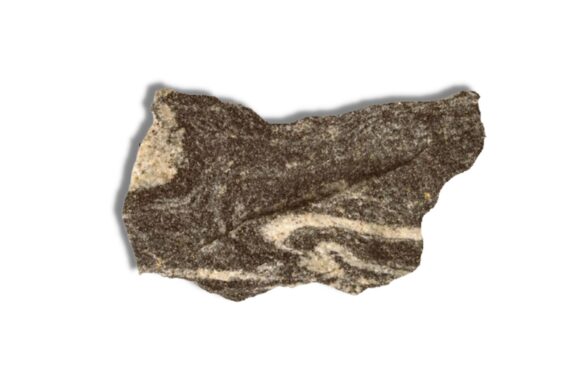Migmatite

A Comprehensive Overview of Texture, Structure, and Formation
Migmatite is a type of metamorphic rock that is characterized by a combination of igneous and metamorphic textures. The name “migmatite” is derived from the Greek words “migma,” meaning mixture, and “lithos,” meaning rock. The rock’s unique properties make it an intriguing subject for geologists, and its formation offers insights into the geological processes that have shaped the Earth over millions of years. This article provides a detailed overview of migmatite, its texture, structure, and formation.
Overview of Migmatite
Migmatite is a complex rock that is composed of a mixture of metamorphic and igneous rocks. It is usually formed under high-grade metamorphic conditions, where extreme heat and pressure cause the original rock to melt partially. The molten material mixes with the remaining solid rock, forming a unique composite rock with a distinctive texture and structure. The texture and structure of migmatite vary depending on the ratio of solid to liquid material during the partial melting process.
Texture of Migmatite
The texture of migmatite is a combination of the texture of the original rock and the texture of the igneous rock that formed during the partial melting process. The solid portion of migmatite is typically composed of metamorphic minerals, while the liquid portion is composed of igneous minerals. The texture of the solid portion can range from fine-grained to coarse-grained, depending on the original rock’s texture. The liquid portion is typically glassy, indicating rapid cooling from the molten state.
Structure of Migmatite
The structure of migmatite is also a combination of the structure of the original rock and the structure of the igneous rock that formed during the partial melting process. Migmatite can have a wide range of structures, including layered, banded, and folded structures. The layered structure is the most common and occurs when the molten material migrates through the original rock in thin layers. The banded structure is formed when the molten material moves through the original rock in thicker bands. The folded structure is formed when the original rock is folded during the partial melting process.
Formation of Migmatite
Migmatite is formed under high-grade metamorphic conditions, where temperatures and pressures are high enough to cause partial melting of the original rock. The partial melting occurs when the temperatures reach the melting point of some of the minerals in the rock. The molten material migrates through the original rock, creating a network of veins and pockets. The partial melting process can take place over a long period, ranging from several thousand years to millions of years, depending on the temperature, pressure, and rate of melting.
Relevance of Migmatite
Migmatite is an important rock type in geology because it provides insight into the geological processes that have shaped the Earth over millions of years. The formation of migmatite is a complex process that involves the interaction of various geological processes, including metamorphism, partial melting, and crystallization. Understanding the formation of migmatite helps geologists to better understand the processes that shape the Earth’s crust and the evolution of the continents.
Conclusion
Migmatite is a complex rock that is composed of a mixture of metamorphic and igneous rocks. The texture and structure of migmatite vary depending on the ratio of solid to liquid material during the partial melting process. The formation of migmatite is a complex process that involves the interaction of various geological processes, including metamorphism, partial melting, and crystallization. The study of migmatite provides valuable insights into the geological processes that have shaped the Earth over millions of years, and it continues to be an important area of research in geology.
